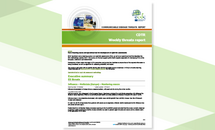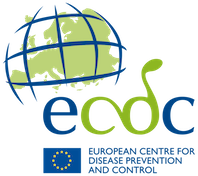Communicable disease threats report, Week 25, 14-20 June 2015
The ECDC communicable disease threats report is a weekly bulletin intended for epidemiologists and health professionals in the area of communicable disease prevention and control. Summarising information gathered by ECDC through its epidemic intelligence activities regarding communicable disease threats of concern to the European Union, it also provides updates on the global situation and changes in the epidemiology of communicable diseases with potential to affect Europe, including diseases that are the focus of eradication efforts.
Executive Summary
This issue covers the period 14 to 20 June 2015, and includes updates on Middle East respiratory syndrome – coronavirus (MERS-CoV) and Ebola virus disease in West Africa.
New cases of MERS reported in Saudi Arabia, the United Arab Emirates, South Korea and Thailand
Since 11 June, Saudi Arabia has reported seven additional cases and seven deaths of previously reported cases. On 16 June, the United Arab Emirates reported one new case, and on 18 June 2015, Thailand’s health ministry confirmed that a person from the Middle East seeking treatment at a Bangkok hospital for heart disease had tested positive for MERS-CoV. This is the first MERS case reported in Thailand. In addition, South Korea has reported 166 cases including 24 deaths as of 19 June 2015.
ECDC’s assessment continues to be that the MERS-CoV outbreak poses a low risk to the EU. Because of the continued risk of case importation to Europe after exposure in the Middle East and South Korea, international surveillance for MERS cases among travellers remains essential.
ECDC published a rapid risk assessment on 11 June 2015 and an epidemiological update on 18 June 2015.
New cases of Ebola virus disease reported in Guinea and Sierra Leone
According to WHO’s latest situation report, during the 21 days up to 14 June 2015, 76 new EVD cases occurred in Guinea and Sierra Leone. Sixty-nine cases (91%) have come from three prefectures in Guinea (Boke, Dubreka and Forecariah) and two districts in Sierra Leone (Kambia and Port Loko).
Nineteen of those cases arose from unknown sources of infection, and/or are associated with a large number of high-risk contacts, some of whom it was not possible to trace. A package of enhanced surveillance and response measures has been introduced in both Guinea and Sierra Leone.
According to WHO, decline in case incidence and the contraction of the geographic area affected by Ebola has stalled during the last weeks. Both in Guinea and Sierra Leone, new confirmed cases are still identified among unregistered contacts and people continue to be diagnosed with Ebola post mortem. These patterns indicate that the disease is circulating in unrecognised chains of transmission. In order to achieve zero cases, there is a need for stronger community engagement, improved contact tracing.
ECDC published an updated rapid risk assessment on 11 May 2015.
Download






